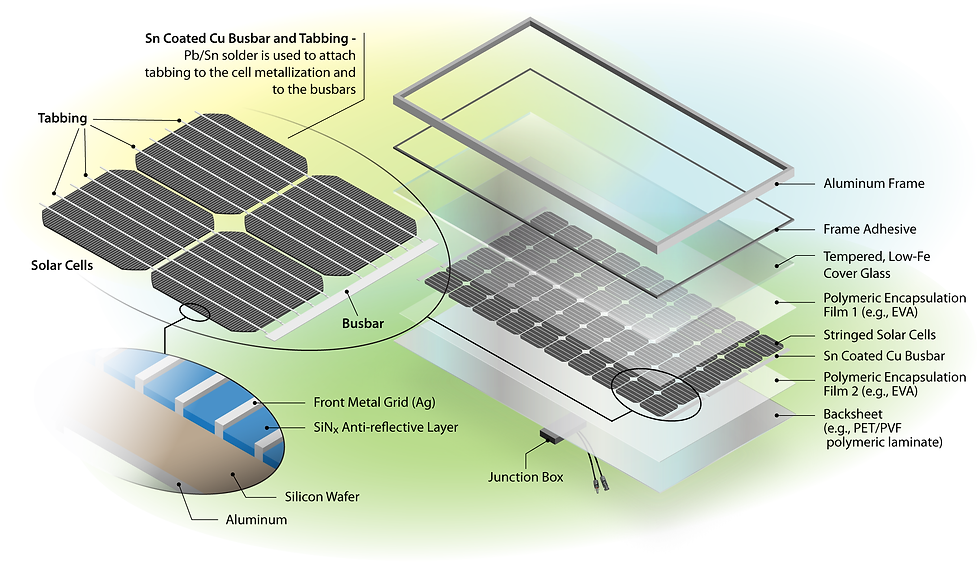The Solar Landscape
- Sophie Wassef

- Oct 12, 2024
- 4 min read
Updated: Jun 22
A review of the current solar technology industry and a look into the future of solar.
The buzz surrounding the potential of solar energy has been around for quite some time. Some think solar power is our saving grace, while others believe we are better off pursuing other means of generating electricity. So where does solar lie today? In this blog we will be exploring what solar power is, the different solar technologies on the market, and future pathways for solar energy in our world.

What is solar energy?
Put simply, solar energy is sunshine—the radiant energy we harness from the sun. There are many different factors that impact the availability and intensity of solar energy, such as location, latitude, climate, and weather patterns. One thing is for certain, however: there is a lot of solar energy available for harnessing. In fact, more energy from the sun falls on the Earth in one hour than is used by everyone in the world in one year (NREL).
Solar energy is free, abundant, and available in most places on Earth. So, how are humans taking advantage of this resource?
What are the most common solar technologies?
The solar energy field is vast and quickly expanding, with new technologies being patented and researched at a rapid pace. For the purpose of this blog, I will give a general overview of the main sectors of the solar industry and the leading technologies.


The two major sectors of solar technologies are Solar Photovoltaics (PV) and Concentrating Solar-Thermal Power (CSP). When sunlight reaches PV materials, they absorb this energy, and it creates electrical charges that, on a larger scale, cause electricity to flow. On the other hand, CSP systems use mirrors to concentrate sunlight onto receivers that collect solar energy and convert it to heat that can be stored for later use or turned into electricity.
What does the future of solar look like?
Well, this is a pretty broad question. Certain people say there is no future in solar, while others claim it is the perfect answer to the critical period of energy transition we are facing right now. Based on my own research, I think the answer falls in between these two extremes.

Solar is cheaper than it has ever been before, and more of the general public is becoming open to using it. As fear of climate change grows, more companies and investors are focusing on this energy source. It is not, however, without its flaws. Solar cells often lack the necessary durability to survive natural disasters, making them very vulnerable to the elements and difficult to find the best places to build them. The intermittency of solar and the lack of powerful batteries also present drawbacks for this type of energy. Despite these shortcomings, we have invested so much time, research, and resources into solar, so it is improbable to believe it will be left behind.
The Solar Futures Study, conducted by the US DOE and the NREL, predicts a scenario in which solar accounts for 45% of U.S. electricity generation by 2050. This is an ambitious goal, which will require rapid change in both the government’s and consumers’ behaviors and priorities.

To reach such ambitious scenarios, we must adapt strategies for clean energy integration in the existing energy grid as we move towards broader renewable energy generation. This means creating high-capacity and reliable energy storage for solar and other renewable energies, allowing for greater grid decarbonization. The practice of demand flexibility, adjusting energy usage to match the supply of electricity, will allow for more economical energy usage and a more reliable grid, as it will decrease any unnecessary strain. These are just two of the many changes we must make to keep solar's promise alive.
Though there will be many obstacles and disappointments along the way, increasing solar energy use is possible if we put greater focus into improving solar and battery technology and increase our efforts in integrating solar production into existing energy grids.
Thank you for reading my blog! If you enjoyed it, please share it with your friends and family or anyone else who might be interested!
-Sophie Wassef
Sources


Comments